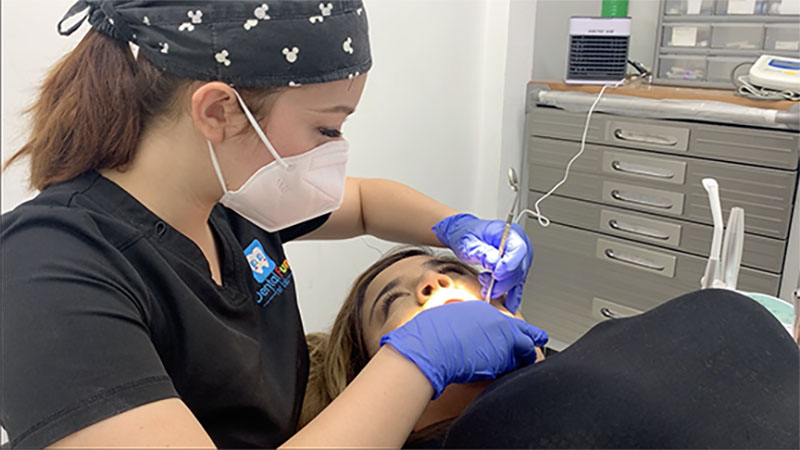CIUDAD JUAREZ — El Pasoans and other U.S. citizens who rely on dentists in Mexico for lower cost dental care face obstacles as COVID-19 travel restrictions remain in place nearly a year later.
The U.S. and Mexican governments in March 2020 limited cross border travel at land ports of entry to “essential reasons” including work, school or medical care. Though dental care is allowed, patients say they face long lines at the border when returning to the U.S. side.
“Before the restrictions that we’re facing now, I used to go like once a month, and they were pretty simple. I would go in come back in an hour, actually,” said Norma Perez, an El Paso patient who crosses into Ciudad Juarez.
“I just got my first appointment last week and it took me four hours to come back, ” said Perez. She’s been seeing a dentist in Mexico for seven years. “I don’t remember the last time the lines were this long” Perez said.
Fewer people are crossing the border, but U.S. Customs and Border Protection also has staffed fewer lanes at ports of entry leading to longer wait times. Acting CBP Commissioner Mark Morgan has said the strategy is to discourage U.S. citizens and legal residents from making non-essential day trips across the border.
Dentists in Mexico have seen a sharp decline in patients from the U.S. who normally cross for lower cost care. “It has changed a lot. There has been a decrease of patients who are American,” Natalia Rivera, a dentist at the Dental Fun clinic in Ciudad Juarez.
Appointments at Dental Fun have dropped by as much as 60% since the pandemic border travel restrictions started according to Rivera.
Despite delays, for some patients the lower cost makes crossing the border for dental care in Mexico worth it.
“The pricing over there is about a quarter of what you pay here and for the same service. So yeah, it is worth it” describes El Paso resident Ana Villegas, who travels to Mexico every month to see Rivera.
Patients like Villegas, who rely on the lower cost care, are growing weary as the travel restrictions remain firmly in place. “I just don’t see like an endpoint to it,” she said.


